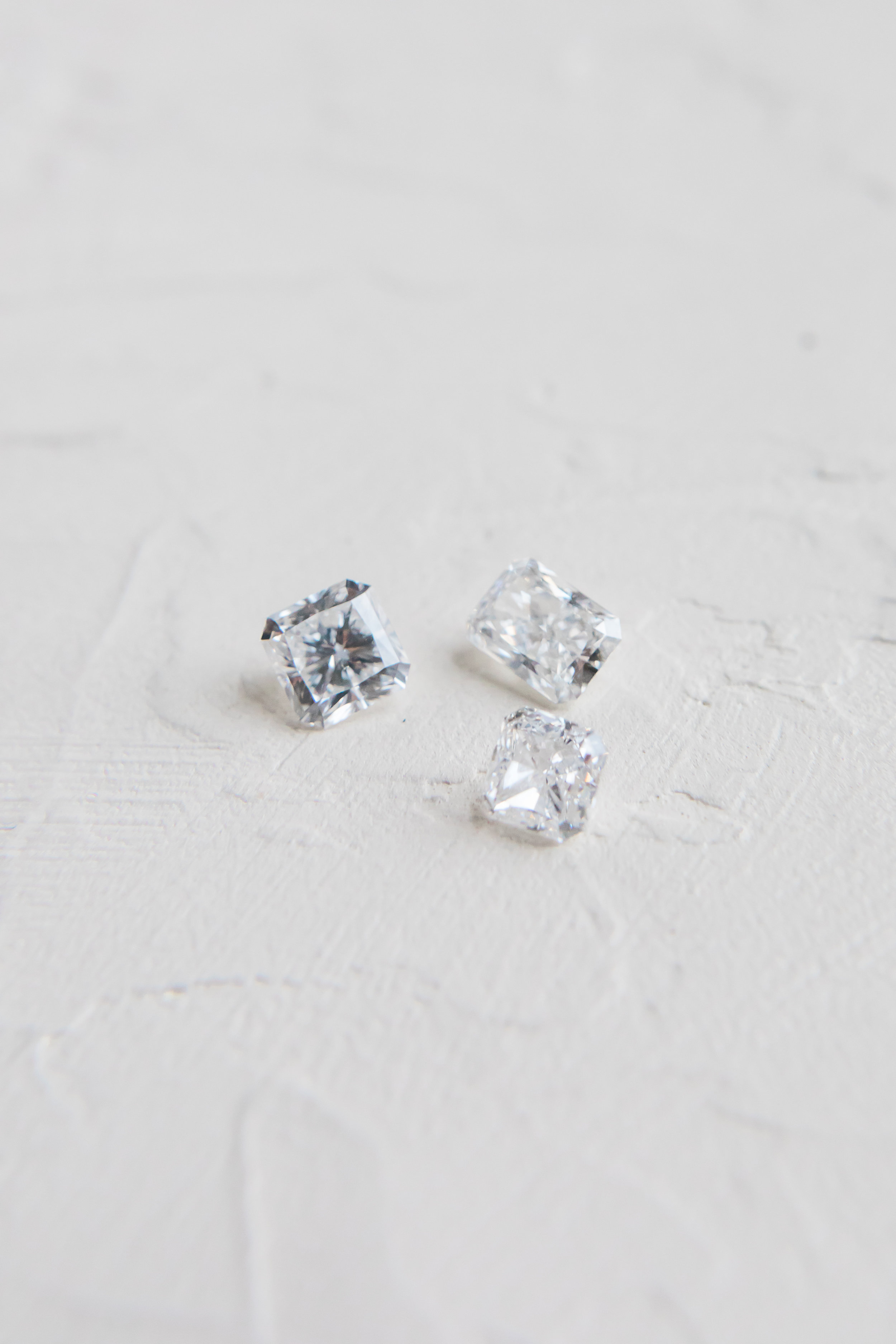Diamond Shape & Value
The engagement experience process is already equally exciting and overwhelming for clients. It’s potentially the most expensive piece of jewelry owned by the wearer.
Combine the sentimental and monetary factors and you can feel a lot of pressure to create the perfect ring.
One of the major decisions made when engagement ring shopping is what diamond shape to create with, if you’re designing with a natural diamond in mind.
While, you definitely need to like the shape you choose, there are quite a few other factors to keep in mind that affect the price, longevity and overall appearance of your ring.
The Difference Between Shape & Cut
I could explain how shape and cut differ, but over at The Knot , they already do a great job putting it in simple terms:
“While you must cut a diamond to make a shape, the shape is essentially the overall geometry or form of the diamond (round, square, etc.), while the cut is the diamond's facets and proportions -- the things that give diamonds their brilliance and fire.” (The Knot)
Some diamond shapes are easier to cut well, allowing some to sparkle more easily than others.
Getting the Best Cut
There are two general types of diamond cuts: brilliant and step. Brilliant cuts have facets that are mostly triangular or kite shaped and radiate from the center. Step cuts have long, narrow facets in rows that produce a “hall-of-mirrors” effect.
Brilliant Cuts
Reflected by its overwhelming popularity, a round diamond is the ultimate in brilliance. Due to the ability of its 57 or 58 facets to reflect light, the sparkle factor of a round brilliant is nearly unmatched.
Radiant diamonds were actually the first square cut with a brilliant facet pattern, before the princess debuted. They round out the top three shapes for consistently achieving maximum brilliance.
Oval, marquise and pear diamond shapes are harder to cut well due to the “bow-tie effect.” With all fancy-cut diamonds, there’s a visible area that pulls light down into the center of the stone.
While this effect is harder to avoid with these elongated shapes, very well-cut ovals, marquises and pears can be very flattering.
This is also why it’s extremely important to have an educated professional guide you honestly through the diamond selection process so that the cut is properly taken into consideration.
Step Cuts
Emerald shapes can be beautiful if perfectly cut, but with much fewer facets, it’s easy for an emerald to appear dull. Because imperfections are seen much more easily in emerald cuts, you may need to invest in a stone of higher clarity.
Setting Options
With custom design, setting styles are not a problem with any stone shape/cut, as they may be with pre-fabricated designs.
Vulnerability to Damage
Generally, the more difficult a diamond is for a goldsmith to set, the more vulnerable it is to damage. That includes damage incurred both within the setting process as well as damage while the ring is being worn.
According to jewelry entrepreneur Claire Baiz of Big Sky Gold & Diamond Brokers, the diamond shapes most vulnerable to damage are:
Trillion
Princess
Marquise
Pear
All four of these shapes have sharp edges or points, making them prone to chipping when struck.
With no flat edges at all, round cuts are least likely to chip and can be most easily set securely.
Value
For many, budget is one of the largest factors when creating an engagement ring. Here’s how the different diamond shapes stack up according to cost.
True Royal Asscher diamonds, a proprietary signature cut, are rare and pricey.
Well-cut emeralds carry a higher price point, especially when increasing clarity to avoid dullness.
Round brilliants tend to come with a higher price tag as well. Partly due to high demand, but also because more of the rough stone is lost in the cutting process.
Cushions and ovals are generally even less expensive.
Less popular shapes like marquise, trillion, and pear are typically affordable due to lower demand.





